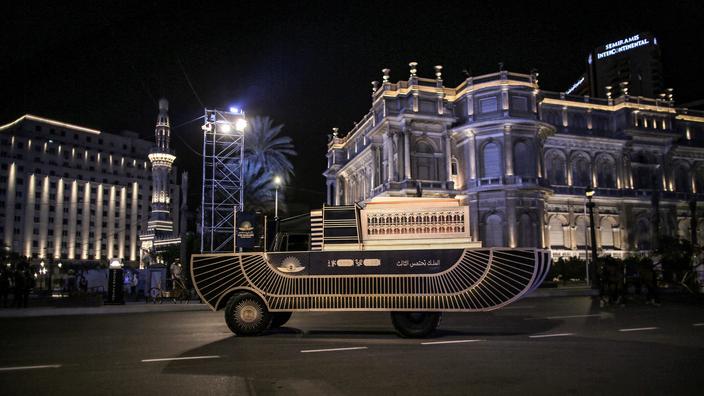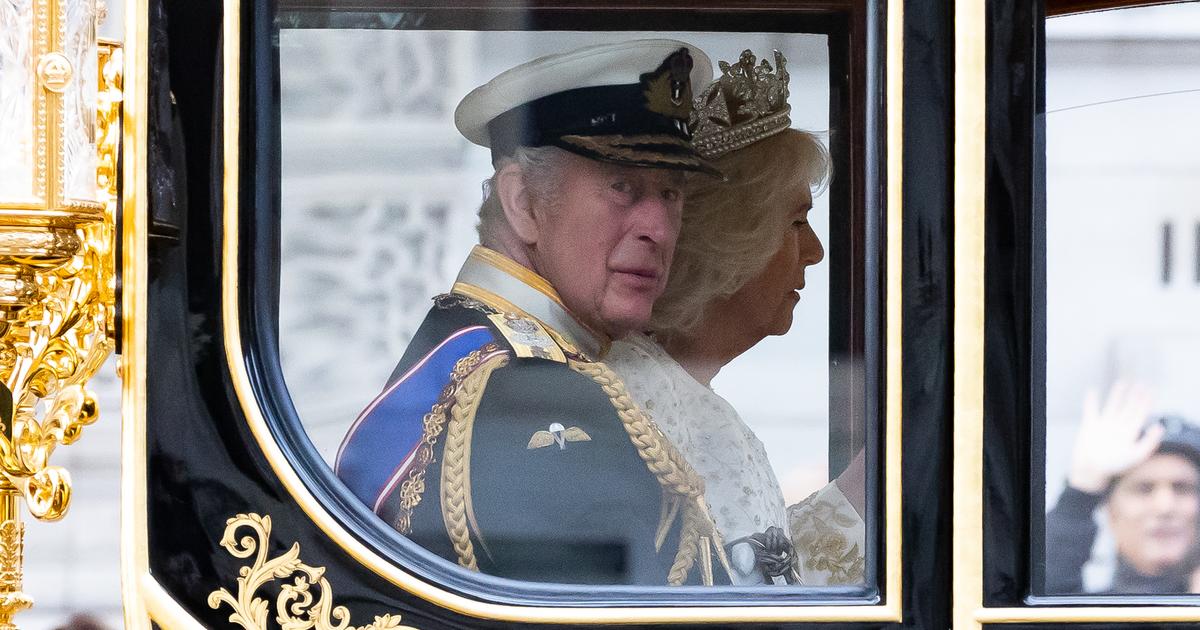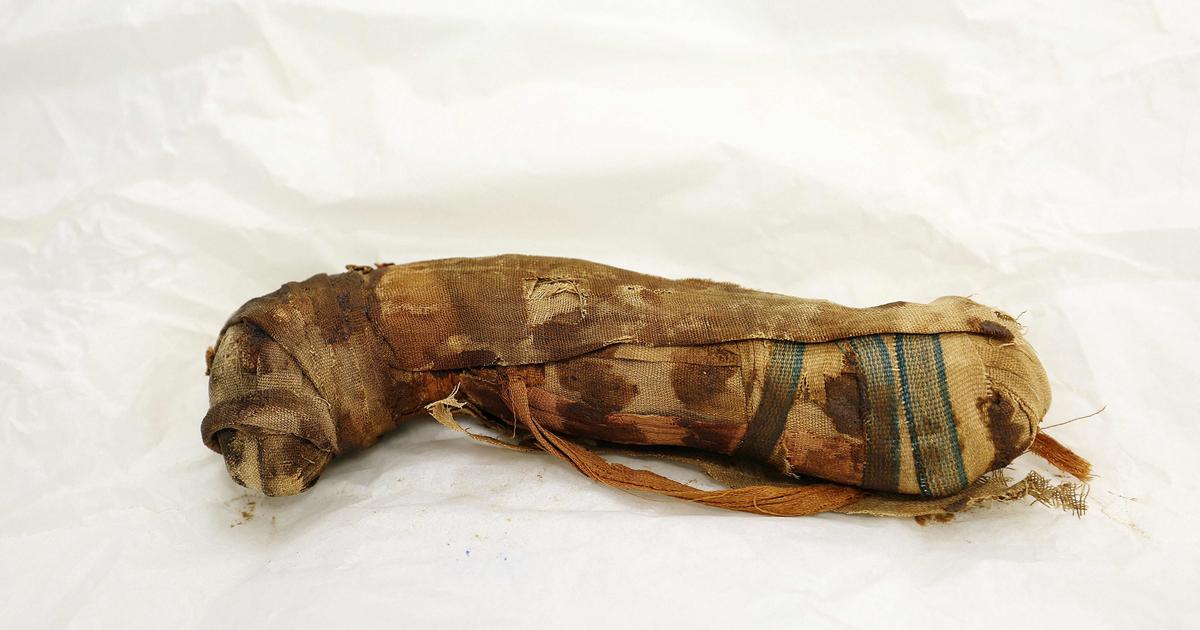For Unesco, "it is the culmination of a long effort to better preserve them and better display them".
On Saturday evening, a historic parade of royal mummies, broadcast on television, took place from Tahrir Square in Cairo.
The seven-kilometer journey saw the remains of eighteen Pharaohs and four of their queens reach the National Museum of Egyptian Civilization (NMEC).
Bathed in blue light, the procession left the century-old museum in the square, accompanied by a show with extras in pharaonic costume, chariots drawn by horses, under the beating of drums of a brass band and to a background of symphonic music. .
For the occasion, Tahrir Square, recently decorated with an ancient obelisk and four ram-headed sphinxes, was closed to vehicles and pedestrians.
The convoy, made up of black vehicles adorned with golden and luminous patterns reminiscent of ancient funeral vessels, left under high security shortly after 8 p.m.
Under gunfire, the tanks arrived at the new museum around 8:30 p.m., greeted by President Abdel Fattah al -Sissi.
In addition to numerous police vehicles, a mounted guard framed the route of the bodies of these twenty-two rulers of ancient Egypt.
The mummies traveled in a chariot named after the monarch and fitted with shock absorption mechanisms, in an envelope containing nitrogen to preserve them.
The procession sets off from Tahrir Square REUTERS TV / REUTERS
In chronological order, the pharaoh Seqenenre Tâa (16th century BC), nicknamed "the courageous", led the way, closed by Ramses IX (12th century BC).
Among the most famous mummies are those of the famous Hatshepsut and Ramses II.
The reign of Hatshepsut, about 20 years (1479-1458 BC), was marked by an increase in trade.
Ramses II, great warrior king and one of the most powerful pharaohs, reigned 67 years (1301-1236 BC).
The NMEC, which occupies a large building south of Cairo, is due to open on April 4.
But the mummies will not be on public display until April 18.
Discovered near Luxor from 1881, most of the 22 mummies had not left Tahrir Square since the beginning of the 20th century.
Since the 1950s, they were exhibited there in a small room, without clear museographic explanations.
At NMEC, they will appear in more modern housings for better temperature and humidity control.
The mummies will be presented alongside their sarcophagi, in a setting reminiscent of the underground tombs of kings, with a biography and objects linked to the sovereigns.
The return of the curse of the pharaohs
After years of political instability linked to the popular revolt of 2011, which dealt a heavy blow to tourism, Egypt is seeking to bring back visitors, in particular by promoting culture.
In addition to the NMEC, Egypt is due to inaugurate within a few months the Grand Egyptian Museum (GEM) near the pyramids of Giza, which will house Pharaonic collections.
The grand parade, announced by the authorities with the help of online videos, was accompanied by musical and stage performances.
REUTERS TV / REUTERS
According to Walid el-Batoutti, advisor to the Minister of Tourism and Antiquities, the parade "shows that after thousands of years, Egypt retains great respect for its leaders," he said on the public channel. Nile TV international.
The ceremony was broadcast live REUTERS TV / REUTERS
The grand parade, announced by authorities using online videos and interspersed with musical performances by Egyptian artists, caused a stir on social media.
Under the hashtag in Arabic # malédiction_des_pharaons, many Internet users have associated the recent disasters in Egypt with a "curse" which would have been caused by the displacement of the mummies.
In one week, Egypt experienced the blockage of the Suez Canal by a container ship, a train accident that left 18 dead in Sohag (south) and the collapse of a building in Cairo which resulted in death of at least 25 people.
The "curse of the pharaoh" had already been mentioned in the 1920s after the discovery of Tutankhamun's tomb, followed by the deaths considered mysterious of members of the team of archaeologists.









